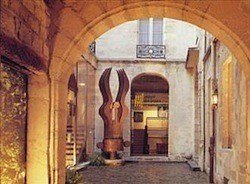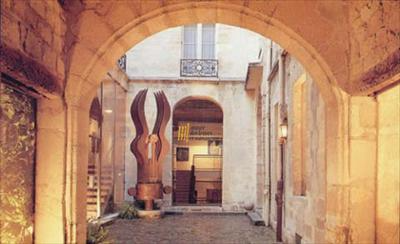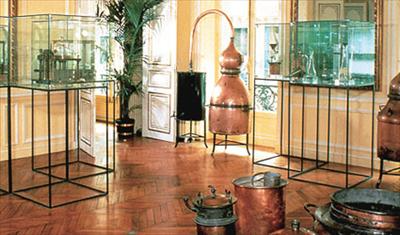Unusual Museums

Thu 28 Jan 2010
 The Museum of Letters and Manuscripts
The Museum of Letters and Manuscripts
8, rue de Nesle, in the 6th Arrondissement.
Wed, 1–9 p.m; Tues and Thurs–Sun, 10 a.m.–6 p.m.
Closed Mon. Annual closure: Nov 1–Dec 10.*
I have a confession—I hate emails. As a way of doing business they’re tolerable, a necessary evil. Second confession—I write letters. Just tell me you aren’t twice as thrilled to open an envelope addressed to you from a friend or lover as you are to open something in your inbox. Perhaps this is why I love the Museum of Letters and Manuscripts as much as I do.
Still, even if you’re not similarly inclined, there’s much at this tiny museum to amaze: more than 2,000 documents, by some pretty big names. Einstein’s brainwaves on the theory of relativity are recorded in scribbled notes to a friend. Baudelaire bitches about money. Catherine de Médicis writes to her housekeepers. (I half expected to find a line reading, “Leave the final seasoning to me.”) A telegram from the Titanic reveals the utterly business-oriented arrangements of an upper-class marriage of the day.
The whole of the upper floor is devoted to Napoleon: letters in the man’s own hand detailing battle maneuvers to his generals, political edicts and such. But the letters of his I would most want to read, to Josephine, are not on display here. Call it voyeurism if you want, but I prefer to file it under “journalistic curiosity.”
N.B. All information provided is in French only, though there are English leaflets available at the desk.
*Check the website before your visit; the museum is closing for part of spring 2010 in order to move to a new location on boulevard St.-Germain.

Fragonard Museum and Perfumery
On rue Scribe: 9, rue Scribe, in the 9th. 01 47 42 04 56.
Mon–Sat, 9 a.m.–6 p.m.; Sun and holidays, 9 a.m.–5 p.m.
On blvd des Capucines: 39, blvd des Capucines, in the 2nd.
01 42 60 37 14. Mon–Sat, 9 a.m.–6 p.m.
The Fragonard perfume house is also home to two small museums that explore the processes of perfume making and display collections of antique perfume flacons.These free museums (one on rue Scribe and the other on boulevard des Capucines) are a lovely way to spend half an hour or so. If you have time for only one of them, I’d recommend the larger rue Scribe location, with its beautiful 18th-century rooms, ornate moldings and gilt.
The different antique methods of extracting scent from flowers and herbs are documented, and there are different machines and contraptions, scales, vials and other apparatuses, all of which invite comparisons with alchemy. I always find myself amazed at this type of thing, thinking, What accident led to this discovery?
Also wonderful are the perfume bottles on display, including examples from some of the earliest civilizations up through the 1950s. There’s English Wedgwood from the 18th century, tiny travel toilette sets and miniature bottles designed to be pinned to clothing—so mind-bogglingly tiny it’s a marvel that anything could ever have been decanted into them. There’s also a small collection of “comedy” porcelain perfume bottles in human form with various holes . . . Well, you see where this is going.
There’s also an interactive element, a sensory guessing game where you can sniff pomades and try to identify the raw scent—orange or rosemary, for example. I pinched a little rose pomade from the pot to wear as perfume. A week later, my scarf still smells of it.